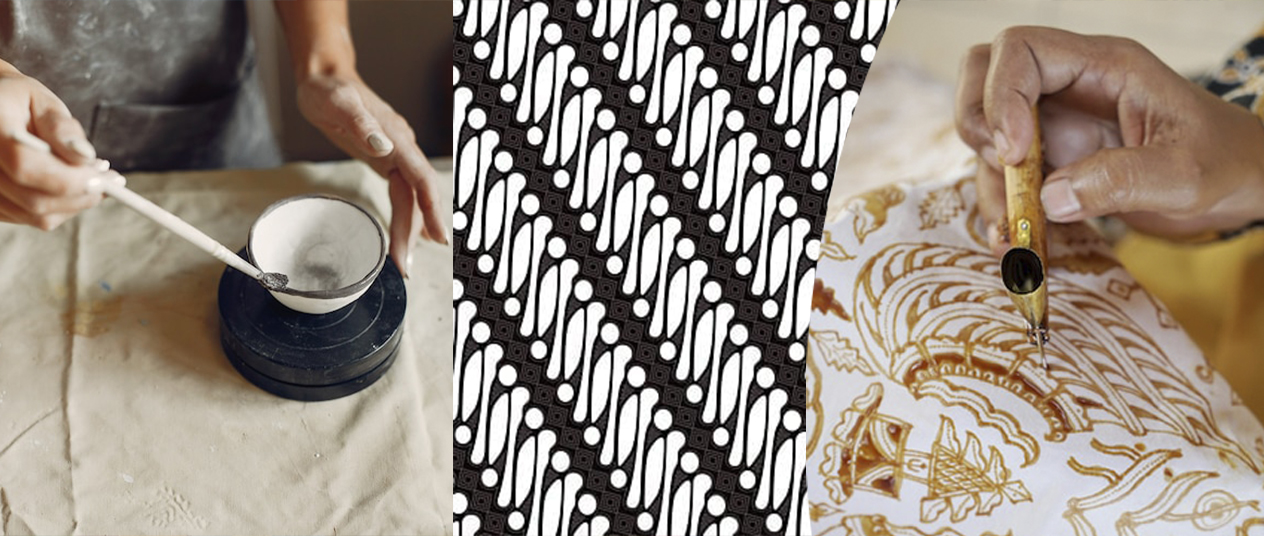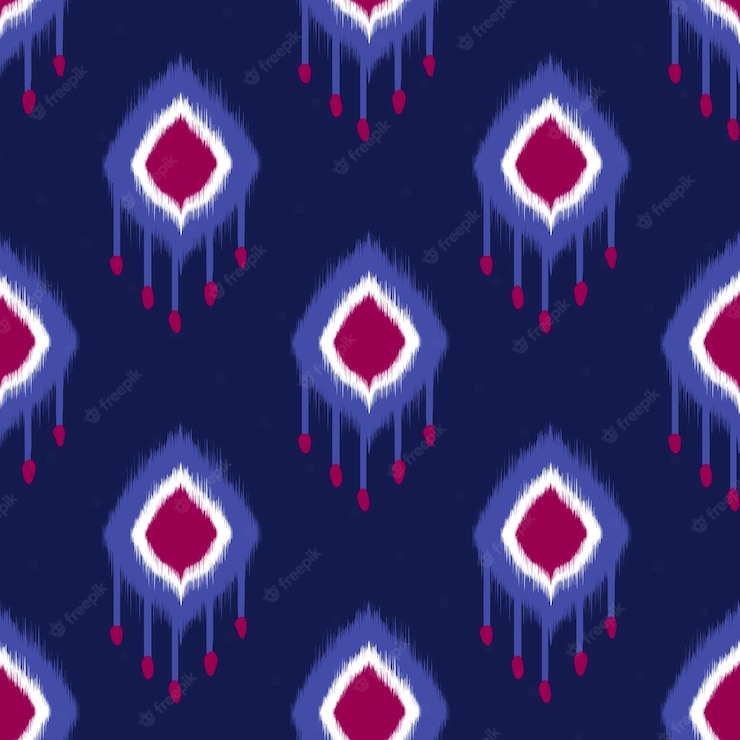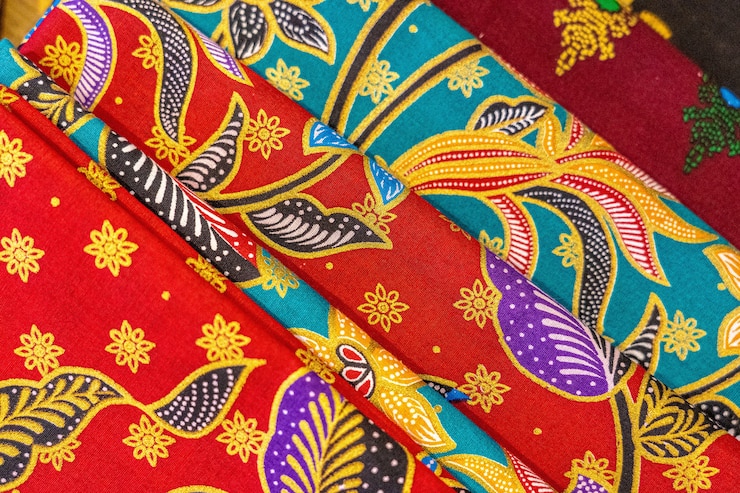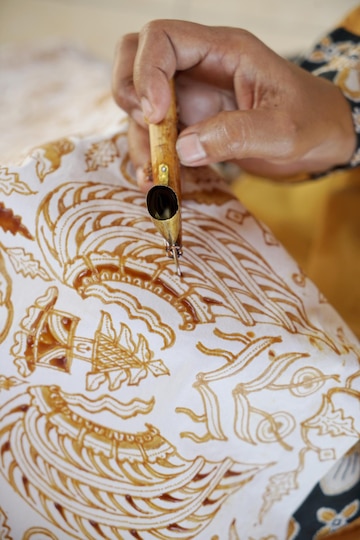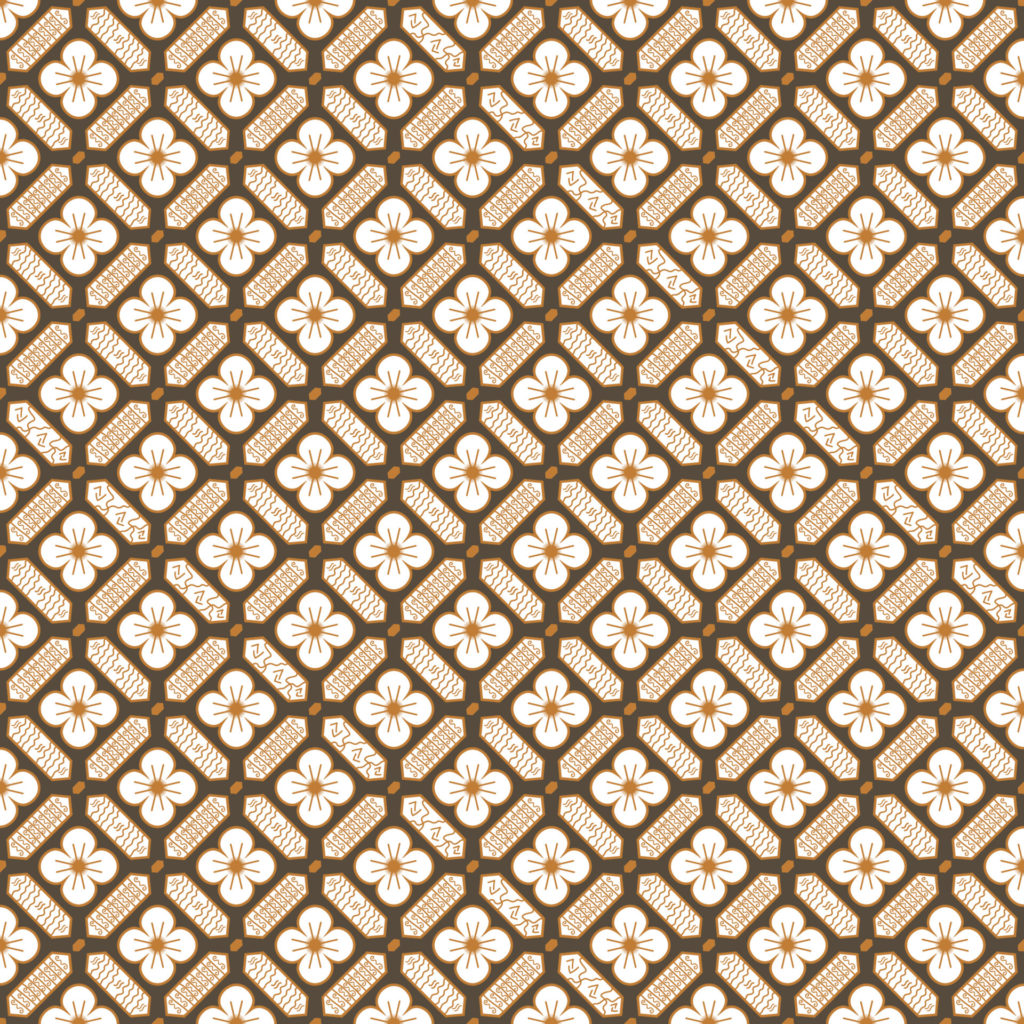Batik fabric has been celebrated for centuries for its beautiful and vibrant patterns and colors. Originating from Indonesia, this unique form of textile art has a long and rich history. The process of making Batik fabric is a long and intricate one, involving a mixture of wax, dye, and cloth, and the results are stunning. From traditional Indonesian motifs to modern designs, Batik fabric has found its way into homes and wardrobes all around the world. In this blog post, we’ll explore the history and beauty of this exquisite fabric
The Origins of Batik Fabric
Batik fabric is an ancient art form that originated in Indonesia, specifically on the island of Java. Its history dates back over 2000 years, making it one of the oldest textile traditions in the world. The word “batik” is derived from the Javanese word “ambatik,” which means “a cloth with little dots.”
The art of batik is deeply rooted in Indonesian culture and has been passed down through generations. It is believed that batik was originally used as a means of spiritual expression, with each design holding symbolic meaning. Over time, batik evolved to include intricate patterns and vibrant colors, becoming a staple of Indonesian clothing and textile production.
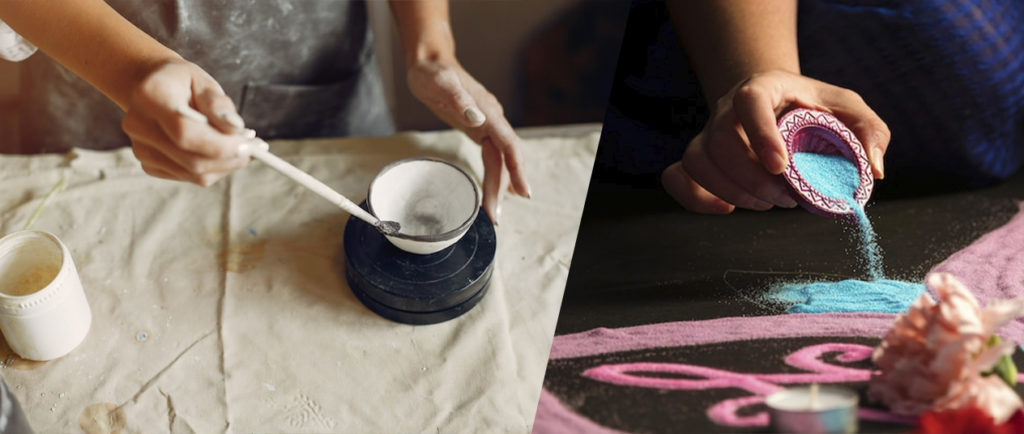
The process of creating batik fabric is labor-intensive and involves several intricate steps. Traditionally, the fabric is made from natural materials such as cotton or silk. A pattern is drawn on the fabric using wax, which acts as a resist. The fabric is then dyed, and the areas covered in wax remain the original color. This process can be repeated multiple times to achieve complex designs and layered colors.
Today, batik fabric continues to be highly valued and celebrated for its rich history and vibrant beauty. It is not only used in traditional clothing but also incorporated into modern fashion, home décor, and art. Batik has become a symbol of Indonesian culture and craftsmanship, and its unique patterns and designs have captured the attention of people worldwide.
The Batik Process
The process begins with a piece of plain, natural fabric such as cotton or silk. The fabric is stretched taut on a frame to ensure a smooth surface for the wax application.
Next, the design is drawn onto the fabric using a pencil or a special tool called a canting. The canting is a small metal pen-like tool with a spout that is used to apply the hot wax onto the fabric. The wax acts as a resist, preventing the dye from penetrating certain areas of the fabric.
Once the design is outlined with wax, the fabric is immersed in a dye bath. The fabric is soaked in the dye for a certain period of time to allow the color to saturate the fabric. After dyeing, the fabric is left to dry. Once it is completely dry, the fabric is placed between layers of newsprint or fabric and heated with an iron to remove the wax. This process is called waxing out and it reveals the vibrant colors and intricate patterns of the Batik design.
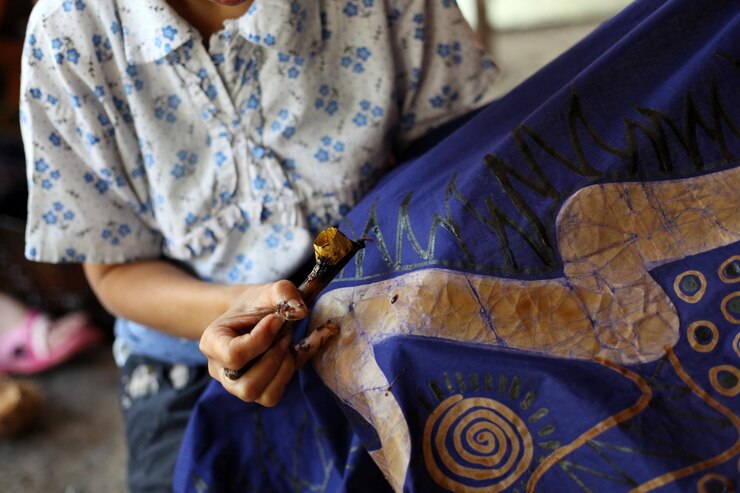
The final step involves washing and rinsing the fabric to remove any excess dye. The fabric is then ready to be used in various ways, such as clothing, accessories, or home decor items.
The Batik process requires skill, patience, and attention to detail. Each piece of Batik fabric is truly unique, reflecting the craftsmanship and creativity of the artist. It is a labor-intensive process, but the result is a fabric that is both visually stunning and culturally significant.
Tools and Materials Used in Batik Making
Creating beautiful Batik fabric requires specific tools and materials to achieve the desired intricate patterns and designs. Here are some of the key tools and materials used in the traditional Batik-making process:
1. Canting: The canting is a small copper or brass tool with a tiny spout at the end, used to apply hot wax onto the fabric. The wax acts as a resist, preventing dye from penetrating certain areas of the fabric.
2. Tjanting: Similar to the canting, the tjanting is also used for applying hot wax onto the fabric. However, it has a larger spout, allowing for thicker lines and larger areas to be covered with wax.
3. Wax Pot: A wax pot is used to melt the beeswax or paraffin wax, which is then filled into the canting or tjanting for application onto the fabric.
4. Natural Dyes: Traditional Batik fabric is made using natural dyes derived from plants, roots, and bark. Common natural dyes used include indigo, soga brown, cochineal, and morinda.
5. Brushes: Brushes are used to apply larger areas of dye onto the fabric, either for a solid background color or for creating unique color blends.
6. Iron or Boiling Water: After the wax has been applied and the dye has set, the fabric needs to be boiled or ironed to remove the wax and reveal the final design.
7. Cotton or Silk Fabric: The base fabric for Batik is usually made from cotton or silk. These fabrics allow for easy wax application and dye penetration.
The tools and materials used in Batik-making play a crucial role in the intricate and delicate process of creating beautiful Batik fabric. The combination of these elements allows artisans to bring to life the unique patterns and designs that have made Batik fabric so highly valued and admired throughout history.
The Importance of Patterns and Designs in Batik
Patterns and designs play a crucial role in Batik fabric, as they not only add beauty to the textile but also hold deep cultural and symbolic meanings. Each design tells a unique story and represents the heritage and traditions of the community that creates it.
One of the most iconic patterns in Batik fabric is the parang, which resembles a knife or dagger. It symbolizes power, protection, and bravery. This design is often worn by the royal families and is also associated with the ancient warrior class.
Another popular pattern is the kawung, which features four circles in a diamond shape. It is believed to represent fertility, wealth, and prosperity. This design dates back to the ancient kingdom of Majapahit in Java and is commonly found in traditional ceremonies and weddings.
The ceplok pattern is characterized by intricate geometrical motifs. It represents harmony and balance, reflecting the Javanese philosophy of life. This design is often seen in traditional Batik textiles used for religious ceremonies and special occasions.
Apart from these traditional patterns, contemporary Batik makers also experiment with modern designs and motifs, incorporating elements from nature, animals, and everyday life. These innovative designs attract a younger generation and keep the art form alive and relevant in today’s world.
Batik in Different Cultures
Batik fabric holds significant cultural value and is celebrated in various parts of the world. From Indonesia to Africa and beyond, batik has made its mark in different cultures. In Indonesia, where batik originated, it holds immense cultural importance. The technique of creating intricate patterns on fabric through wax resist dyeing has been passed down through generations. Batik is used in traditional ceremonies, such as weddings and religious events, and is also worn as everyday clothing. The patterns and colors of batik in Indonesia often represent different regions or symbolize specific meanings.
In Africa, particularly in countries like Nigeria and Ghana, batik is a popular fabric choice. The technique is similar to Indonesian batik, but African batik often incorporates bolder and more vibrant colors. It is used to make traditional clothing, such as the Nigerian “Ankara” fabric, which is widely embraced for its beauty and cultural significance.
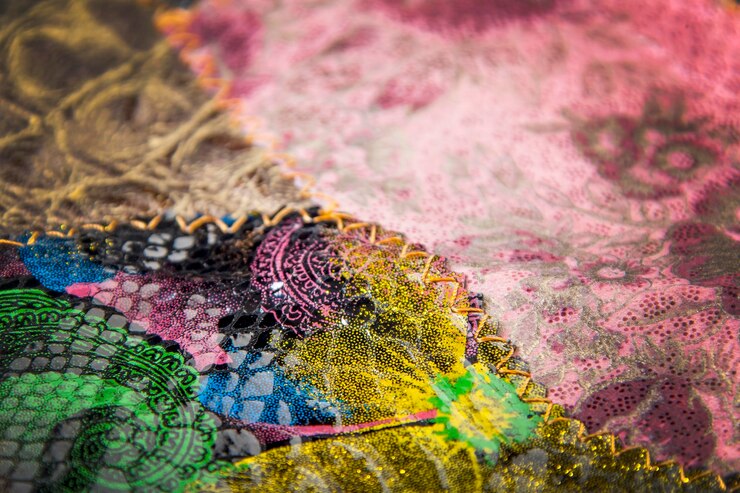
Batik also holds importance in other parts of the world, such as India, Malaysia, and Thailand. Each culture has its unique style and motifs, reflecting their own traditions and beliefs. In India, batik fabric is used to create saris and other traditional garments, while in Malaysia, it is commonly used for traditional outfits called “Baju Kurung.” Thai batik is known for its intricate designs and is often used in the production of garments and home decor items.
Overall, batik fabric serves as a form of artistic expression and cultural heritage in various parts of the world. Its versatility and beauty continue to captivate people globally, showcasing the rich and diverse history behind this traditional textile art form.
Contemporary uses of Batik
In recent years, Batik fabric has found its way into a variety of contemporary uses. Its intricate patterns and vibrant colors make it a popular choice for those looking to add a touch of culture and artistry to their everyday lives.
One of the most common uses of Batik fabric today is in quilting. Quilters appreciate the unique designs and rich textures that Batik fabric brings to their projects. The patterns on the fabric create visual interest and can be used to create stunning patchwork designs. Batik quilts have become highly sought after and are often considered works of art in their own right.
Batik fabric has also become a popular choice for designers in the fashion industry. Its vibrant colors and intricate patterns can be used to create eye-catching garments that stand out from the crowd. From dresses and skirts to scarves and accessories, Batik fabric adds a touch of elegance and individuality to any wardrobe.
Home decor is another area where Batik fabric has gained popularity. It can be used to create beautiful curtains, pillow covers, tablecloths, and even wall hangings. The unique patterns and vibrant colors of Batik fabric bring a sense of warmth and cultural heritage to any space.
In addition to these traditional uses, Batik fabric is also being incorporated into modern art and design. From framed pieces of Batik fabric displayed as artwork to Batik-inspired prints on canvas, artists and designers are finding innovative ways to incorporate this ancient craft into contemporary settings.
Whether it is used in quilting, fashion, home decor, or art, Batik fabric continues to captivate with its rich history and vibrant beauty. Its timeless appeal and versatility ensure that it will remain a beloved choice for creative individuals around the world.


